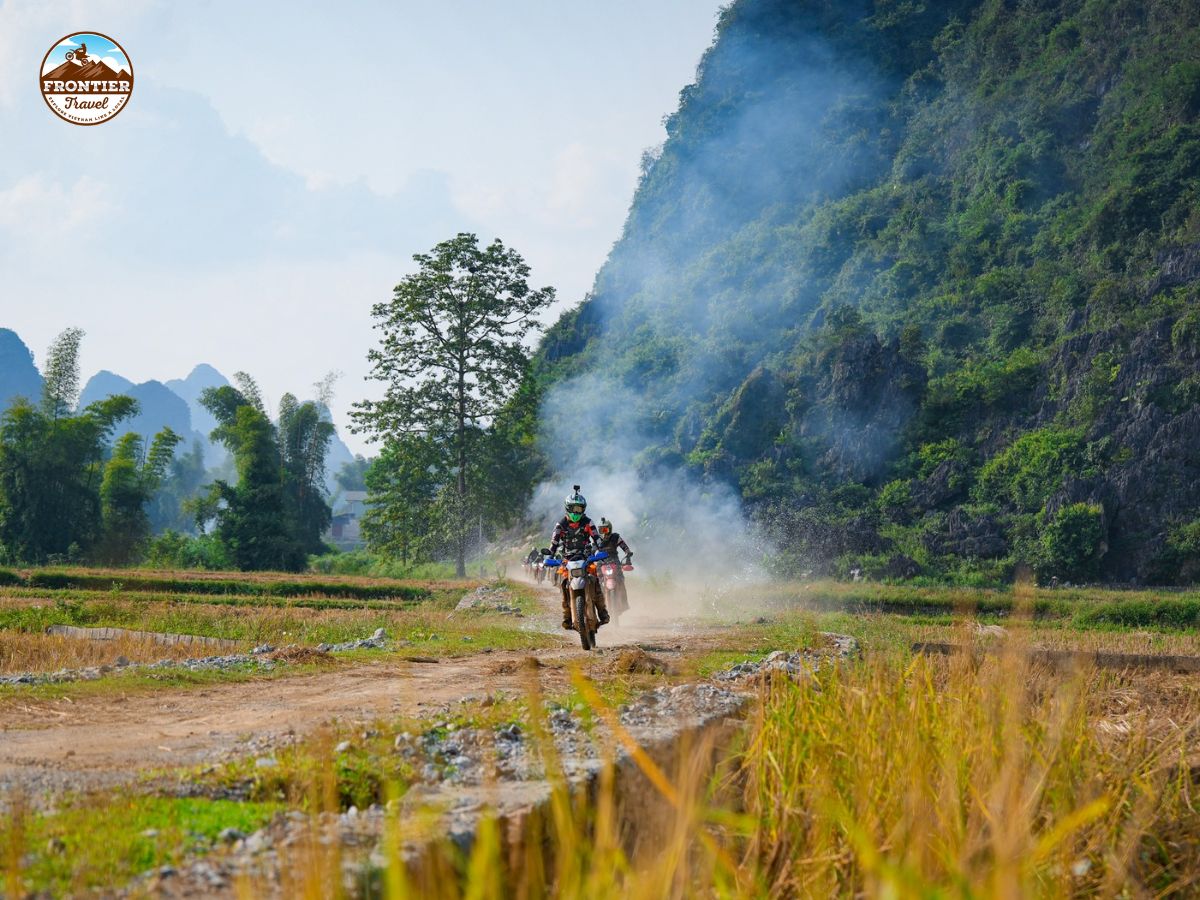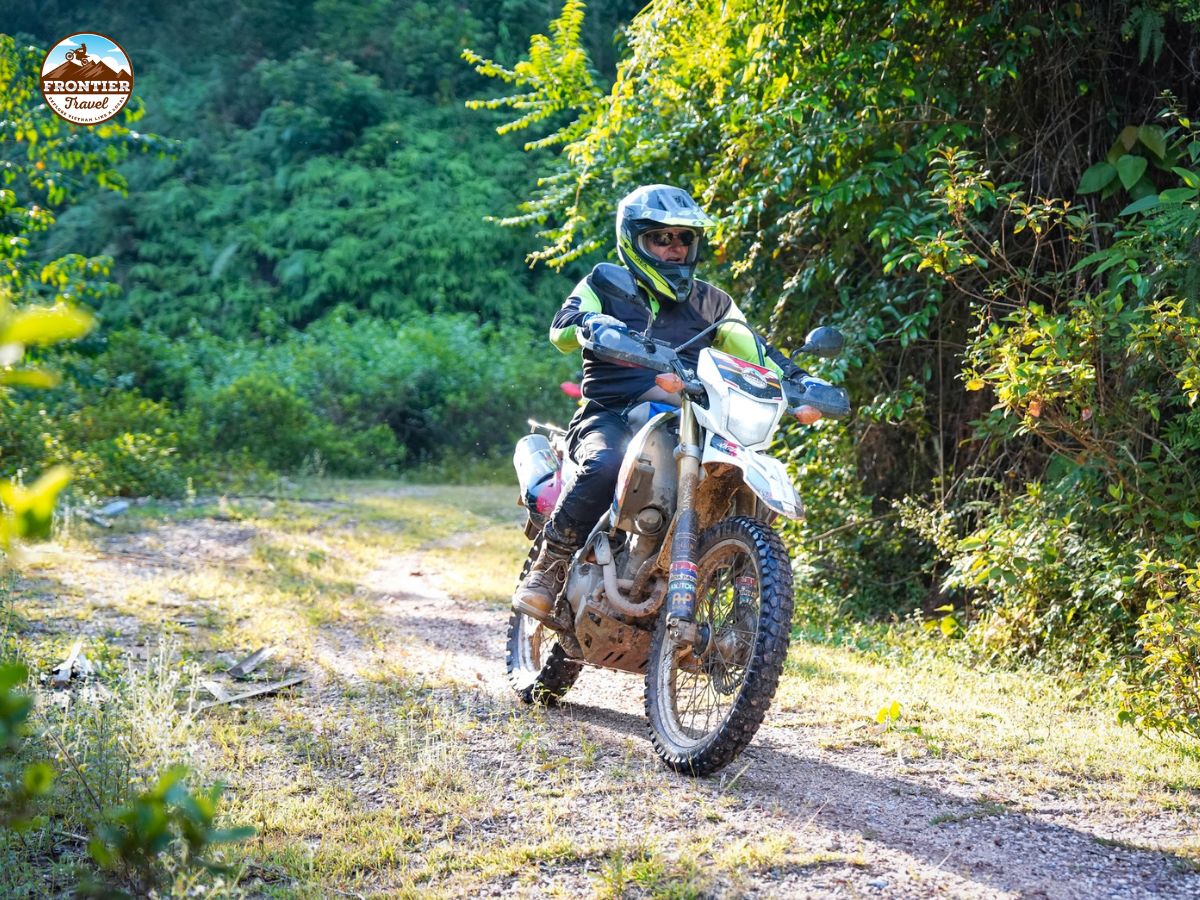Traveling by motorbike in Vietnam is a wonderful experience, but it also requires careful preparation. The following Vietnam motorbike travel tips will help you ride confidently across every route and make your journey safer.

1. Pick the ideal time to start your journey
Determining the ideal time to experience a motorbike tour in Vietnam is not easy, as the climate varies greatly among regions. At the same time of year, the weather in the North, Central and South can differ significantly. Therefore, depending on the route you choose, there will be specific periods considered the most suitable for setting off.
Northern Vietnam
The best time for a motorbike trip in the North is from October to April, when the weather is cool, dry and the skies are clear - perfect for exploring destinations like Ha Giang, Moc Chau, or the Northwest loop.

From May to September, this region enters the rainy season, with occasional storms and landslides on mountain passes, making travel more challenging.
>>> Discover more about the Northwest Vietnam ride
Central Vietnam
The climate in Central Vietnam tends to be harsher due to the influence of the Lao winds and tropical storms from the East Sea. The rainy season typically lasts from September to December, so if you plan to conquer scenic routes such as Hai Van Pass, A Co Pass, or Phong Nha - Ke Bang, the best time to go is between January and August.
Southern Vietnam
Southern Vietnam has two distinct seasons: the rainy season (May – November) and the dry season (December - April). With its mostly flat terrain and few mountain passes, it’s possible to travel by motorbike in this region almost year-round.
However, the dry season is considered the most favorable period, especially if you plan to visit destinations like Da Lat, where the weather is dry, cool and pleasant.
Cross-country journey (along the Ho Chi Minh Trail or National Highway 1A)
For those planning to journey across Vietnam, the period from February to April is considered ideal. During this time, all three regions offer favorable weather: the North stays dry, the Central region hasn’t yet entered its rainy season, while the South remains sunny and bright.
Moreover, this is also the season of many traditional festivals, such as Tet (Lunar New Year), the Lim Festival and various ethnic highland markets, offering travelers the chance to experience Vietnam’s vibrant culture throughout their journey.
>>> Explore more on the: Hanoi to Saigon – Ho Chi Minh trail
2. Read Vietnam motorbike tours reviews before making your decision
Before deciding to book a motorbike tour in Vietnam, it is important to read feedback from other travelers who have taken similar trips. This is one of the most valuable Vietnam motorbike travel tips, as reviews provide an honest perspective on the quality of service and how accurately the itinerary matches what is promised.
When reading reviews of motorbike tours in Vietnam, keep these Vietnam motorbike travel tips in mind:
If many travelers mention the same strengths or weaknesses, that information is usually more reliable than a few individual reviews that are extremely positive or negative.
Be cautious with tours that have very few reviews or only perfect five-star ratings, as these may indicate feedback that is not genuine or completely objective.
To make your research easier, you can check reputable review platforms such as:
Google Reviews: Provides ratings and comments from verified travelers.
TripAdvisor: Widely used for travel experiences and detailed traveler feedback
3. Gear and physical readiness for motorbike touring
Choose the right motorbike suited to the terrain & your physical strength
For mountainous routes, dirt roads, or the Northwest regions, it is recommended to choose a manual clutch bike or an off-road motorbike, which can operate stably on rough terrain. On flatter routes, a manual or powerful automatic bike can also perform well.

Additionally, consider your physical condition and riding experience, avoid choosing a bike that is too heavy or difficult to control if you are not accustomed to long-distance riding.
Prepare your body for long-distance riding
Motorbike touring requires endurance and high concentration, especially on long routes or roads with many mountain passes. Before the trip, practice basic exercises such as walking, jogging and core/arm workouts to improve stamina. Getting enough sleep and maintaining good health before departure is also crucial to reduce the risk of accidents on long rides.
Pack light and practical luggage
When joining Vietnam motorbike tours, overly heavy luggage can affect your balance, especially on steep or slippery roads. Bring only essential items such as lightweight clothing, protective gear, basic first aid supplies, important documents and snacks. Use a backpack or secured bag, making sure it does not obstruct your view or movement while riding.
4. Always follow the instructions of your tour guide or group leader
One of the essential Vietnam motorbike travel tips is to always follow your tour guide or group leader’s instructions during an organized motorbike tour to ensure safety. This includes:
Speed control: Each route has different terrain conditions, and the guide will usually set both minimum and maximum speed limits to keep the group safe.
Distance between bikes: Maintain a safe distance so you have enough time to react if the rider ahead brakes suddenly or encounters an obstacle.
Position in the group: The guide typically arranges the riding formation — usually with a lead bike, riders in the middle, and a sweeper at the end. Staying in your assigned position helps keep the group organized and prevents anyone from getting lost.
Riding signals: Every group ride often uses specific hand or horn signals to indicate turns, rest stops, or obstacles ahead. Learn these signals and respond promptly to the leader’s cues.
Rest stops and timing: Do not stop or separate from the group without notice. If you must stop suddenly (due to a mechanical issue or fatigue), inform the leader using a walkie-talkie or hand signal so they can provide support.
Handling emergencies or route changes: In case of bad weather, landslides, or road closures, the guide will decide on an alternative route. Always follow their instructions rather than trying to find your own way.
By respecting these guidelines, you’ll help ensure not only your own safety but also a smooth and enjoyable motorbike adventure for the entire group.
5. Always carry a first aid kit and know how to treat minor injuries
No matter how careful you are, minor accidents such as scratches, burns, or small cuts can still happen during your motorbike journey. Preparing a small first aid kit will be extremely useful to handle these situations promptly.
Your kit should include:
Antiseptic solution (such as Betadine, medical alcohol, or saline solution) to clean wounds and prevent infection.
Bandages, plasters, and sterile gauze pads to protect wounds, helping them heal faster and stay clean.
Pain relievers, fever reducers, and mild anti-inflammatory medicine to ease discomfort or treat minor injuries
Insect repellent and burn cream, which are especially useful when traveling through forests, tropical areas, or regions with many mosquitoes.
In addition to carrying these essential items, you should also learn some basic first aid skills. These skills will help you respond effectively in emergency situations, especially when riding through remote areas where access to medical facilities may be limited.
6. Be able to identify early signs of danger when riding through mountainous or pass areas
When riding through mountain passes or hilly regions, the ability to observe and recognize early warning signs of danger is crucial for ensuring safety. Mountainous terrain is often complex, with limited visibility and unpredictable conditions.

Therefore, it’s important to pay close attention to the following warning signs:
Warning signs or falling rocks alerts: Areas marked with caution signs often indicate potential landslides, especially after heavy rain. If you notice small rocks rolling onto the road, slow down immediately and carefully observe the mountain slope above.
Slippery or muddy roads: Sections near streams, construction zones, or after rainfall may be covered with mud, making it easy to lose traction and increasing the risk of accidents.
Sharp or blind curves: On steep mountain roads with limited visibility, reduce your speed, honk lightly to alert oncoming vehicles, and maintain a safe distance.
Thick fog: Fog significantly reduces visibility and makes it difficult to see other vehicles. Turn on your low beam or fog lights—never use high beams, as the light can reflect back and cause glare.
Animals or locals crossing the road: In rural areas, livestock or children may suddenly appear on the road, especially during early morning or late afternoon hours.
A successful motorbike trip in Vietnam is not just about the destination, but also about how well you prepare. By keeping in mind these essential Vietnam motorbike travel tips, you can enjoy the beauty of every road while staying safe and in control. Let your curiosity guide you, stay alert along the way, and turn every ride into an unforgettable adventure.







